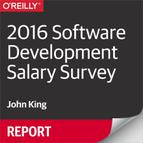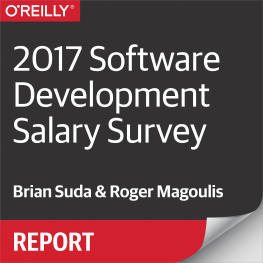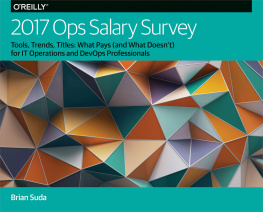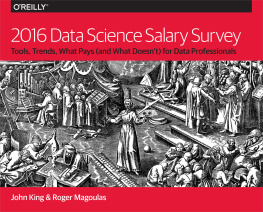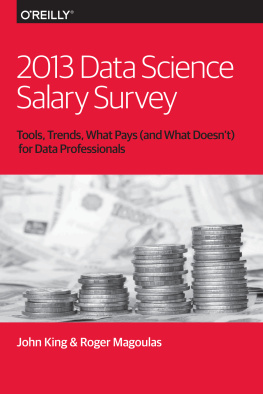John King - 2016 European Software Development Salary Survey
Here you can read online John King - 2016 European Software Development Salary Survey full text of the book (entire story) in english for free. Download pdf and epub, get meaning, cover and reviews about this ebook. year: 2016, publisher: OReilly Media, Inc., genre: Politics. Description of the work, (preface) as well as reviews are available. Best literature library LitArk.com created for fans of good reading and offers a wide selection of genres:
Romance novel
Science fiction
Adventure
Detective
Science
History
Home and family
Prose
Art
Politics
Computer
Non-fiction
Religion
Business
Children
Humor
Choose a favorite category and find really read worthwhile books. Enjoy immersion in the world of imagination, feel the emotions of the characters or learn something new for yourself, make an fascinating discovery.
2016 European Software Development Salary Survey: summary, description and annotation
We offer to read an annotation, description, summary or preface (depends on what the author of the book "2016 European Software Development Salary Survey" wrote himself). If you haven't found the necessary information about the book — write in the comments, we will try to find it.
Abstract: Of the more than 5,000 participants in OReilly Medias 2016 Software Development Salary Survey, 1,353 software engineers, developers, and other programming professionals live and work in Europe. This report includes complete survey results from those respondents, including participants in organizations both large and small, and from a wide variety of industries. Youll learn about the current state of software development-and the careers that propel it-across Europe today. This report presents European survey results, including: The top programming languages that respondents currently use professionally Where, by country, European programmers make the highest salaries Salary ranges by industry and by specific programming language The difference in earnings between programmers who work on very small teams vs. those who work on larger teams The most common programming languages that European respondents no longer use in their work The most common languages that respondents intend to learn within the next couple of years Find out where you stand in the European programming world. We encourage you to plug your own data points into our survey model to see how you compare to other programming professionals in your industry
John King: author's other books
Who wrote 2016 European Software Development Salary Survey? Find out the surname, the name of the author of the book and a list of all author's works by series.


